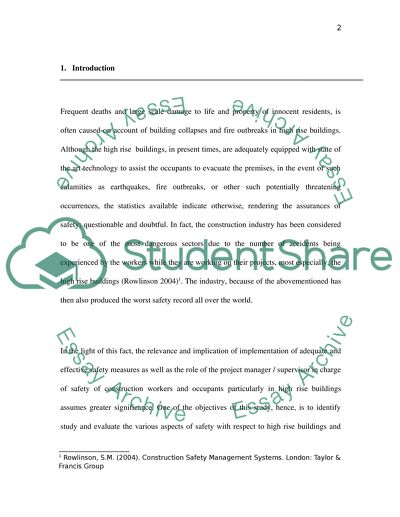Cite this document
(“SAFETY IN HIGH RISE BUILDINGS: THE ROLES OF THE PROJECT MANAGER Essay”, n.d.)
SAFETY IN HIGH RISE BUILDINGS: THE ROLES OF THE PROJECT MANAGER Essay. Retrieved from https://studentshare.org/miscellaneous/1556075-safety-in-high-rise-buildings-the-roles-of-the-project-manager
SAFETY IN HIGH RISE BUILDINGS: THE ROLES OF THE PROJECT MANAGER Essay. Retrieved from https://studentshare.org/miscellaneous/1556075-safety-in-high-rise-buildings-the-roles-of-the-project-manager
(SAFETY IN HIGH RISE BUILDINGS: THE ROLES OF THE PROJECT MANAGER Essay)
SAFETY IN HIGH RISE BUILDINGS: THE ROLES OF THE PROJECT MANAGER Essay. https://studentshare.org/miscellaneous/1556075-safety-in-high-rise-buildings-the-roles-of-the-project-manager.
SAFETY IN HIGH RISE BUILDINGS: THE ROLES OF THE PROJECT MANAGER Essay. https://studentshare.org/miscellaneous/1556075-safety-in-high-rise-buildings-the-roles-of-the-project-manager.
“SAFETY IN HIGH RISE BUILDINGS: THE ROLES OF THE PROJECT MANAGER Essay”, n.d. https://studentshare.org/miscellaneous/1556075-safety-in-high-rise-buildings-the-roles-of-the-project-manager.


